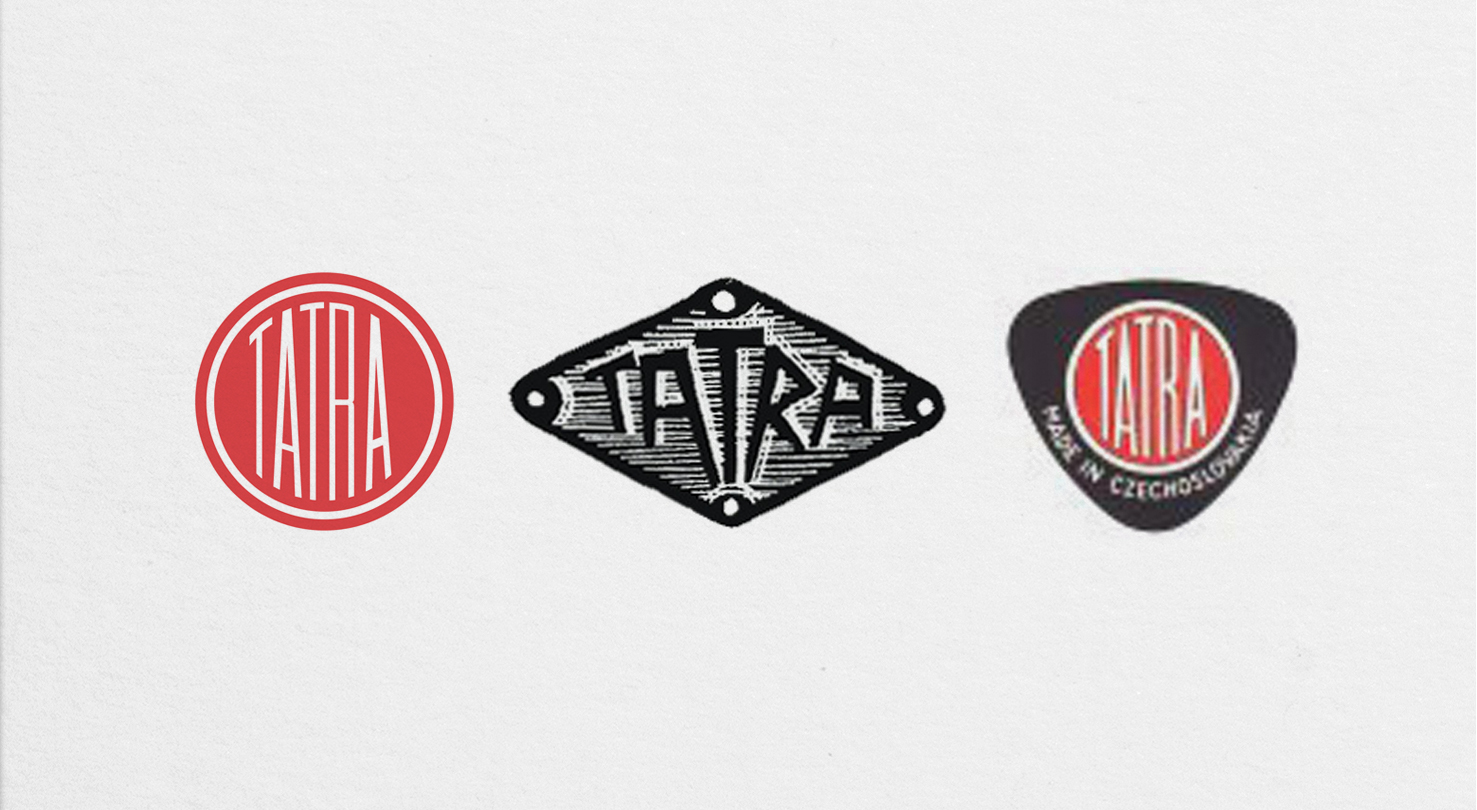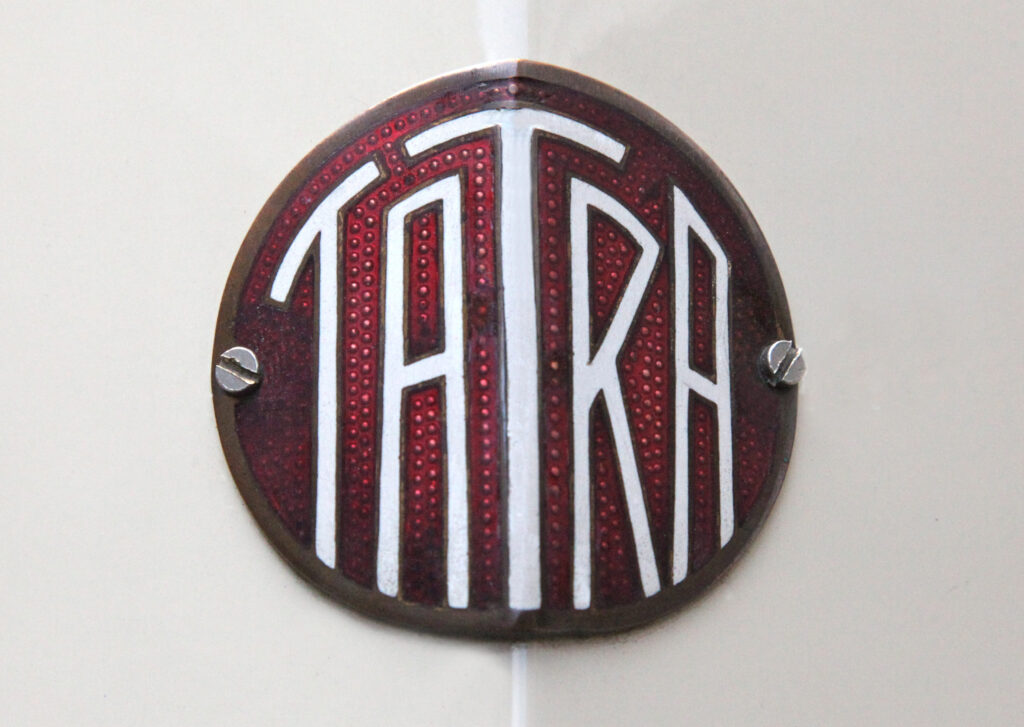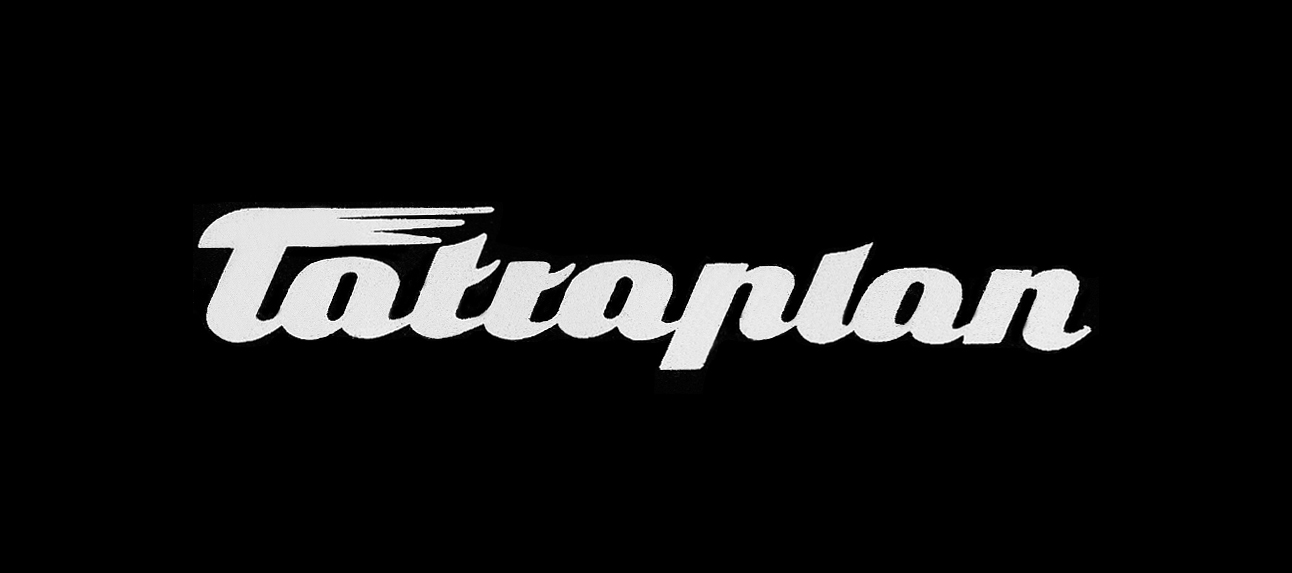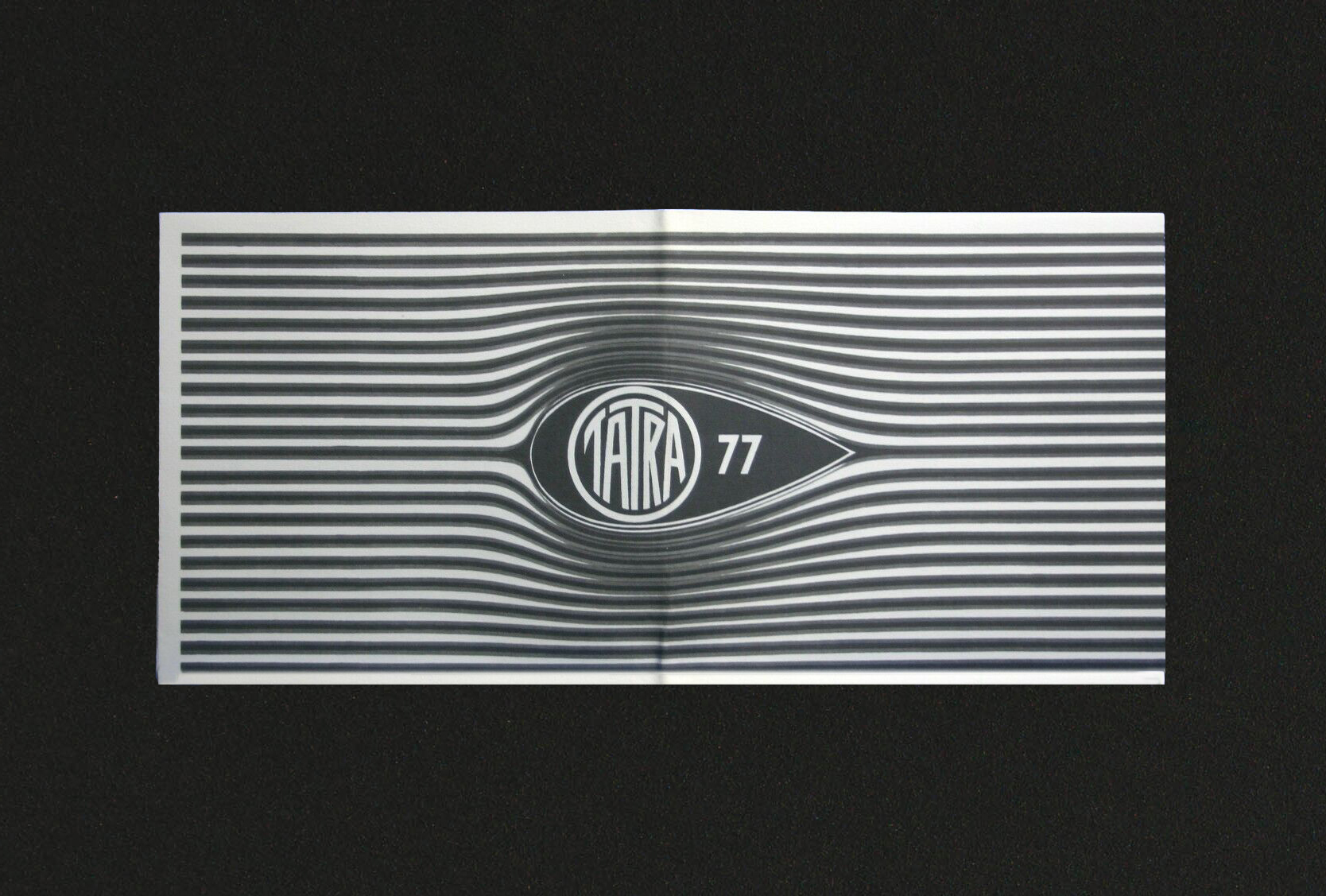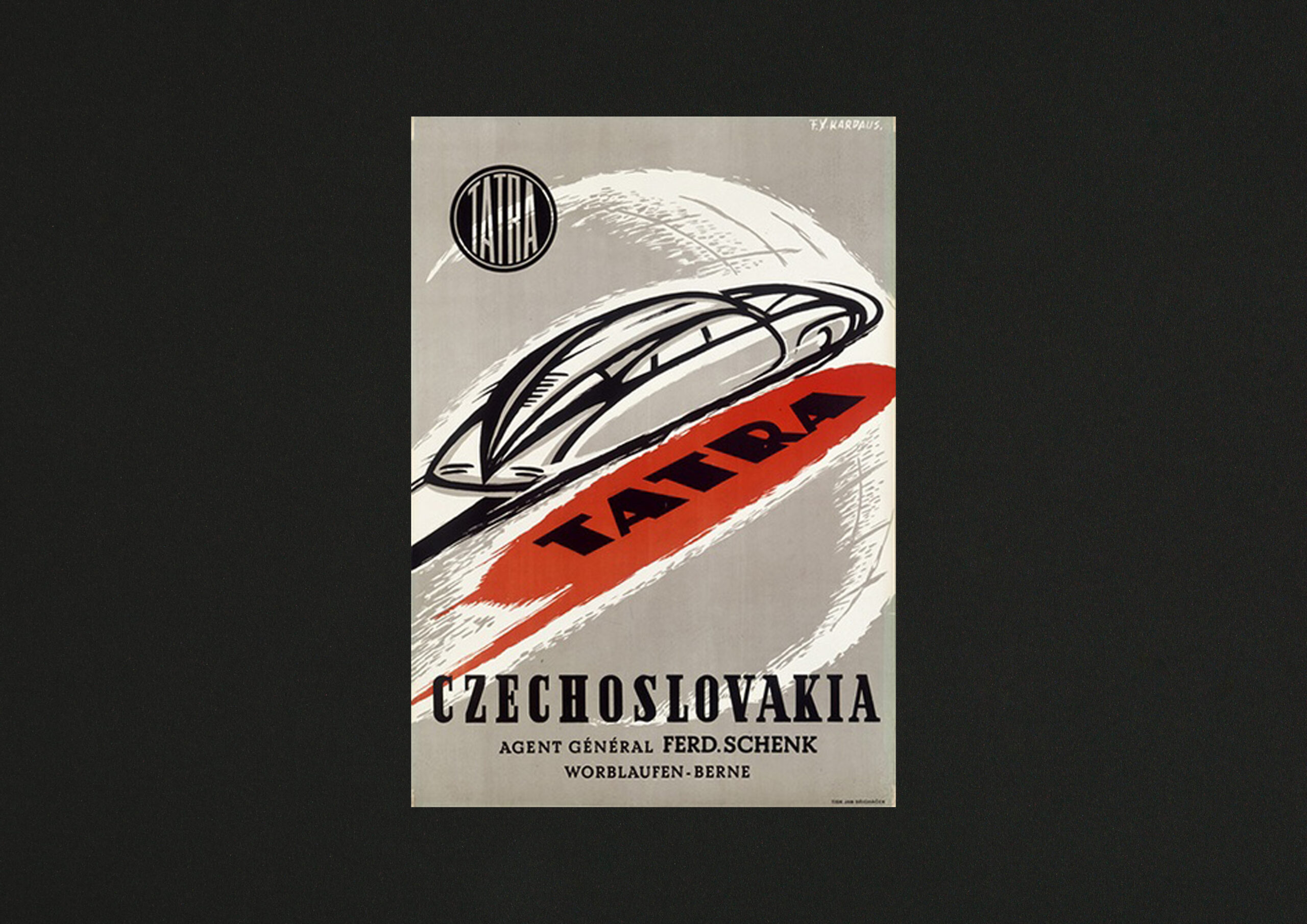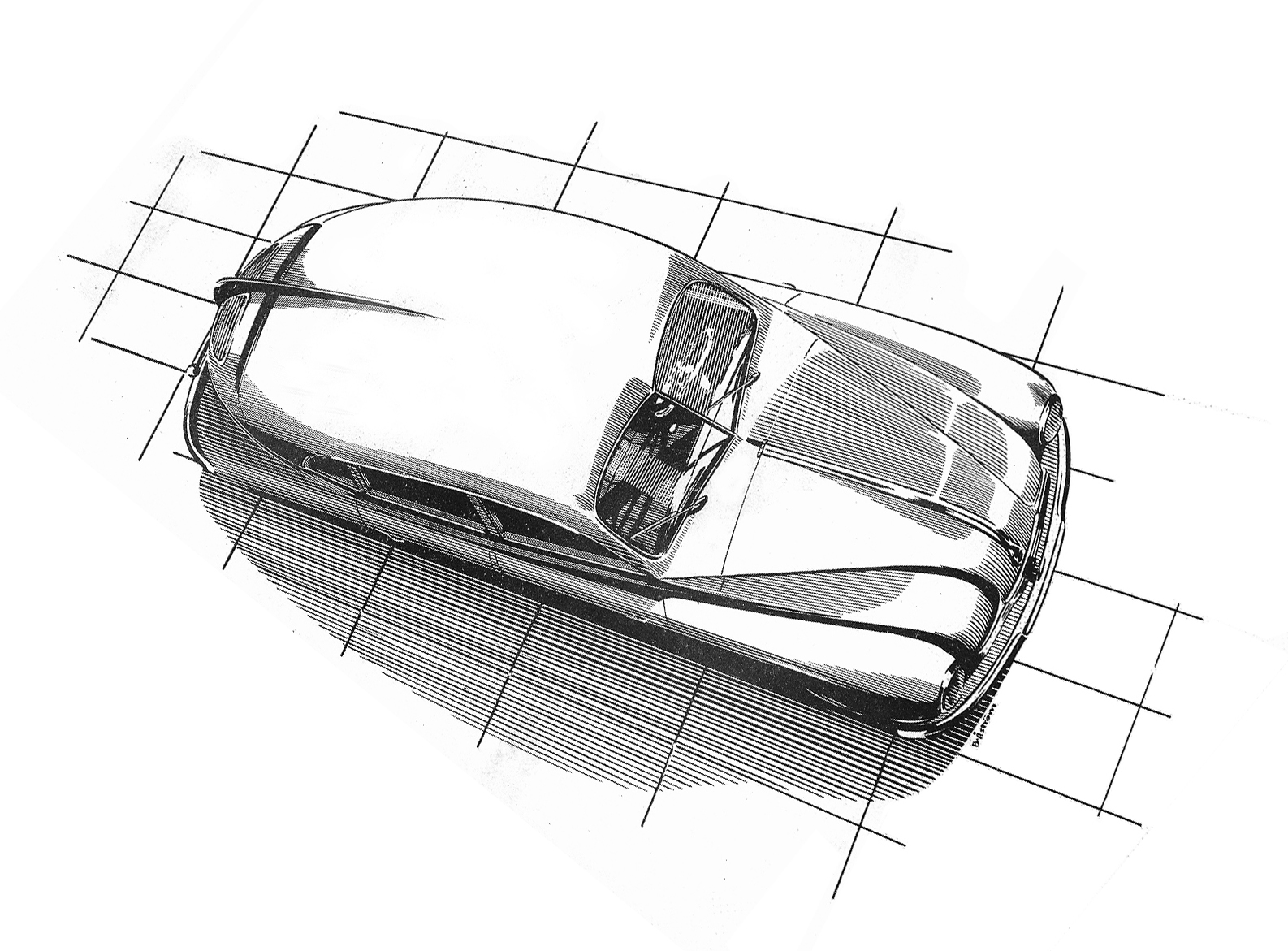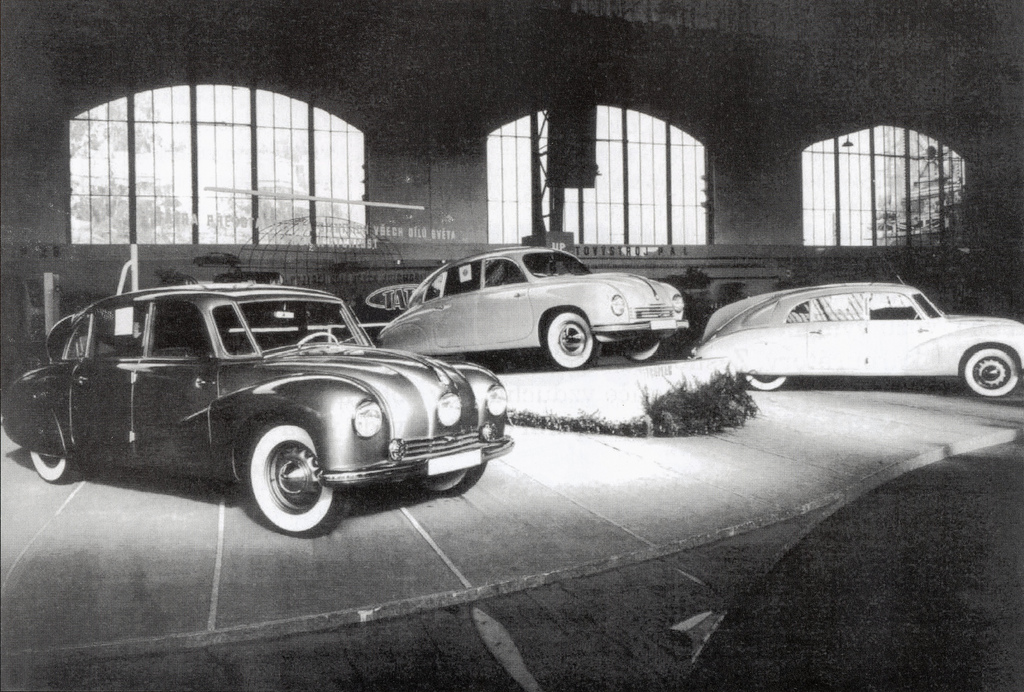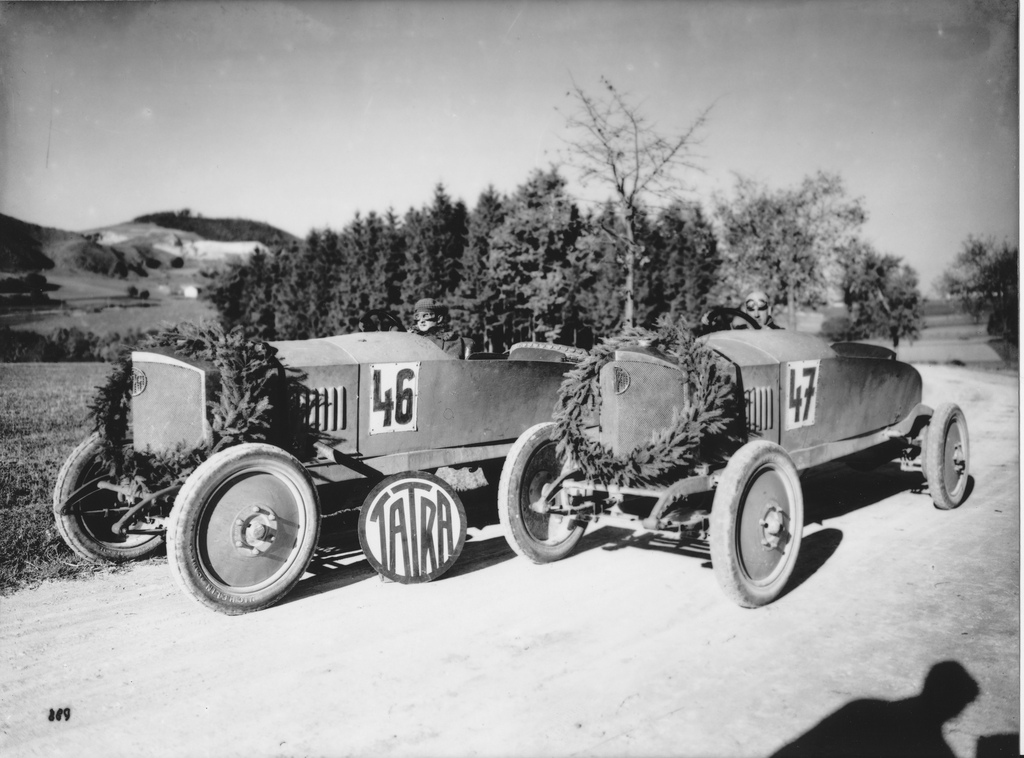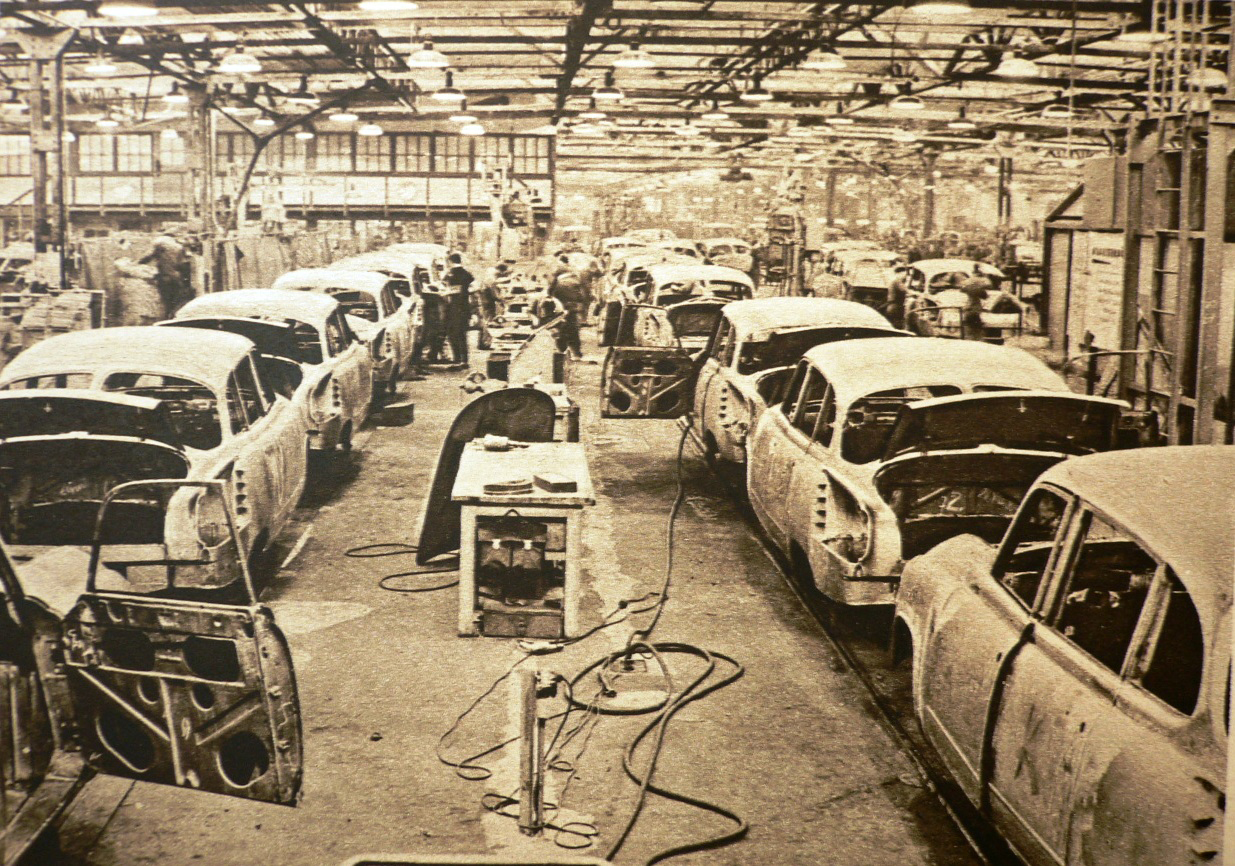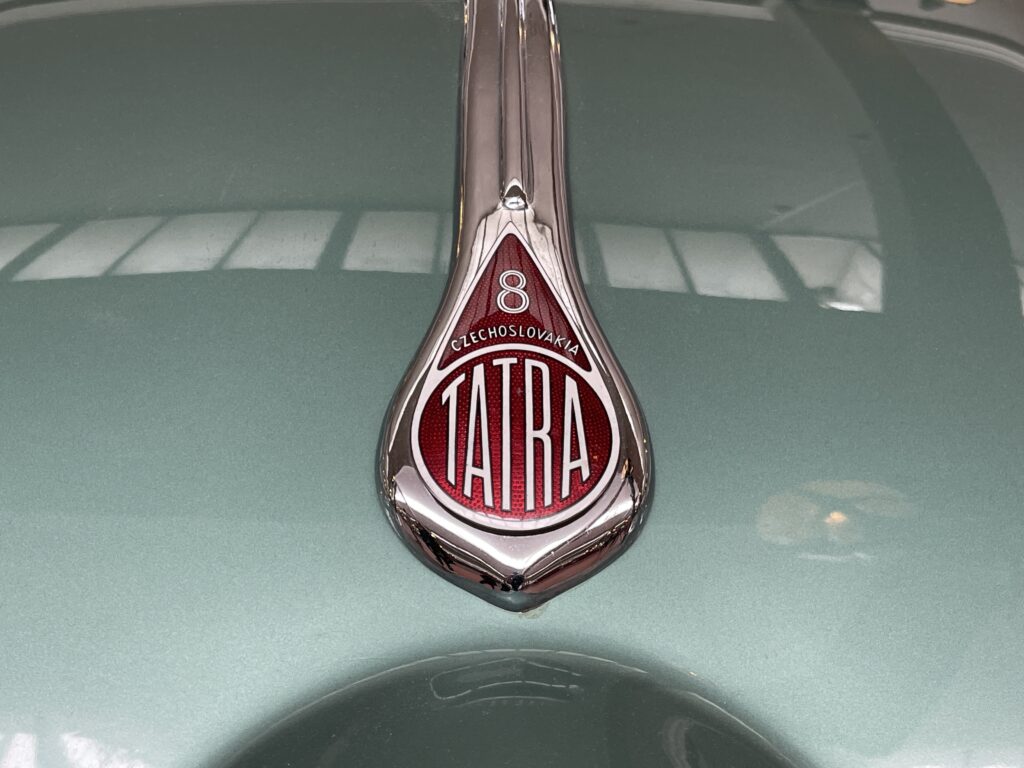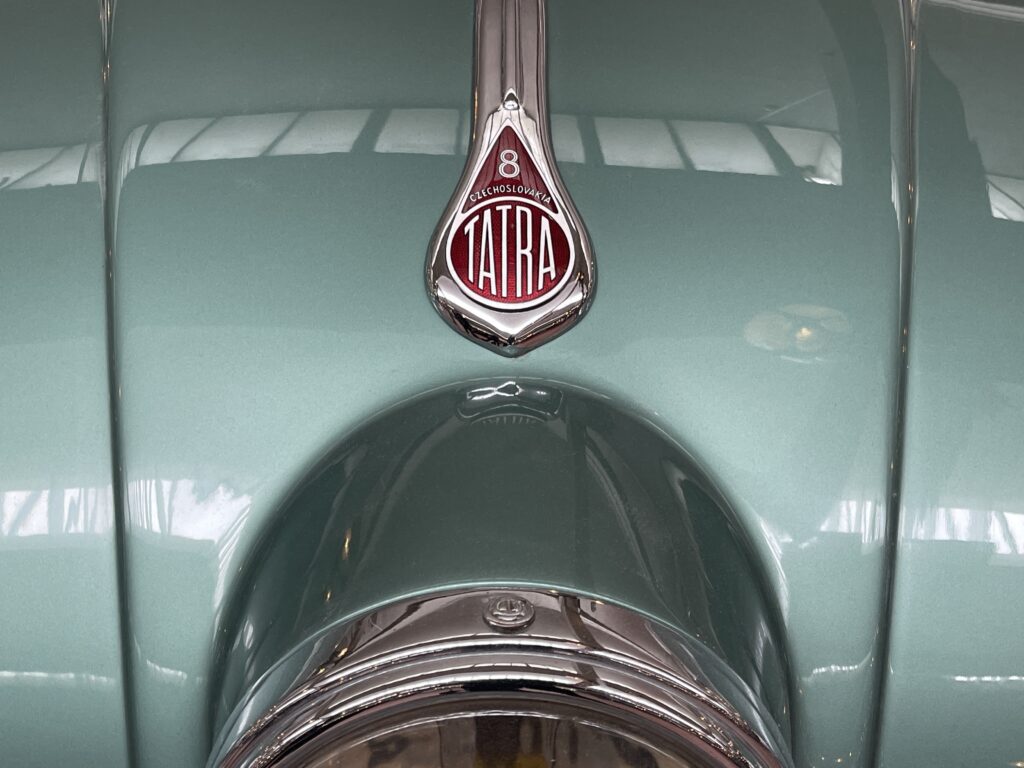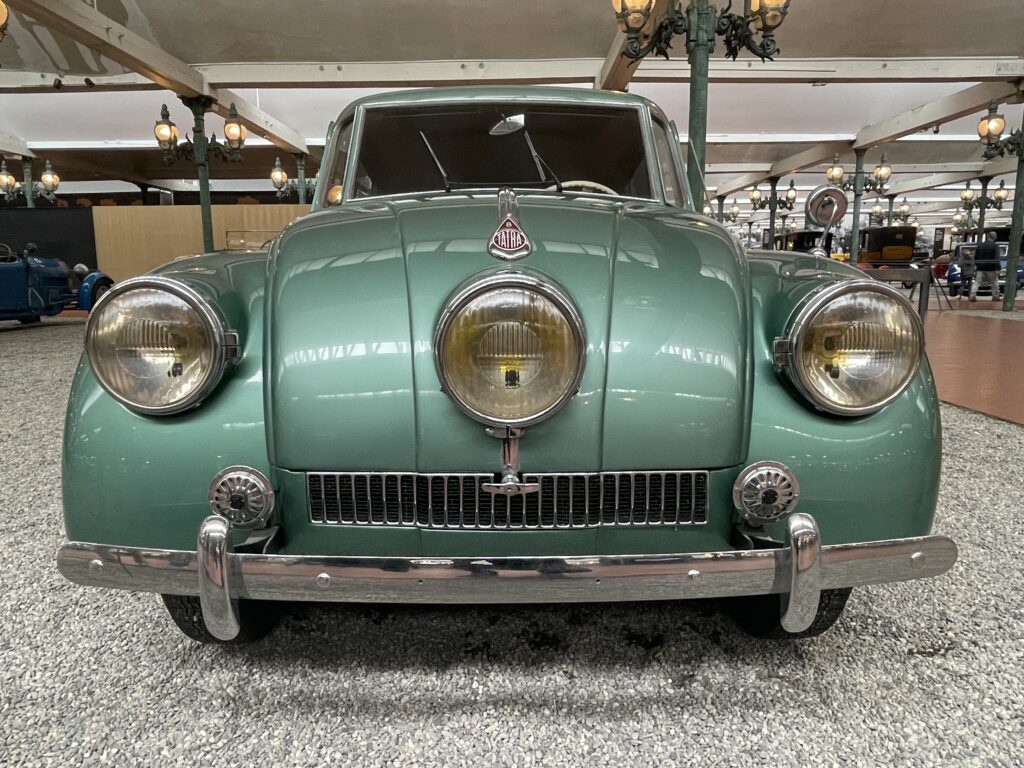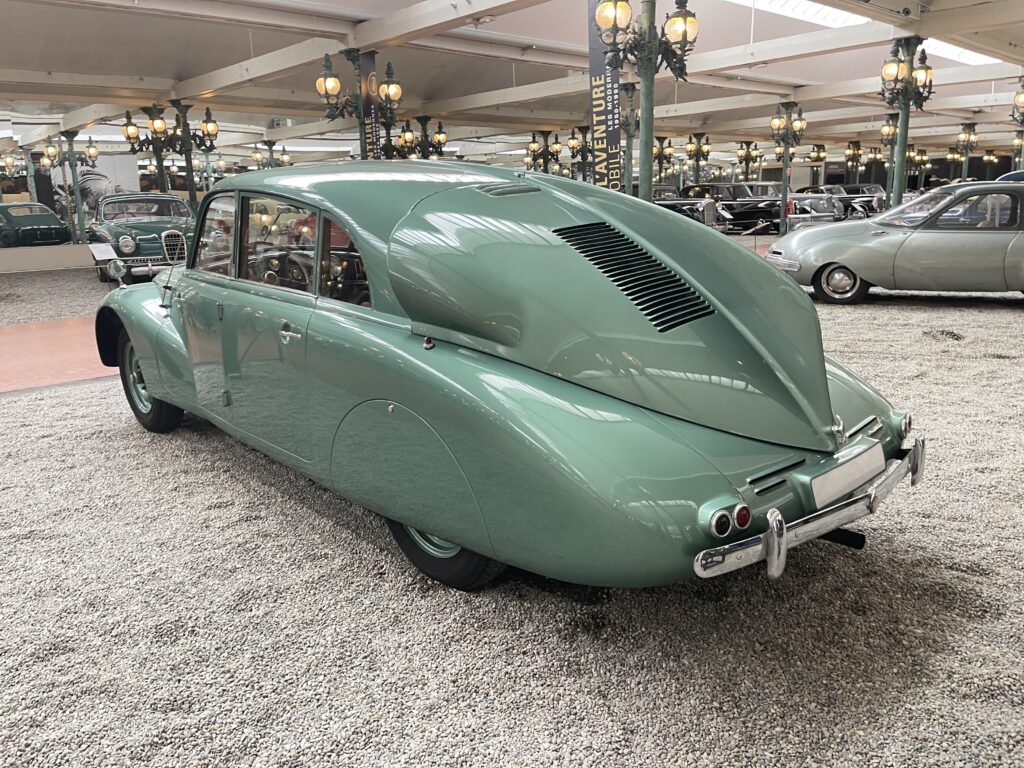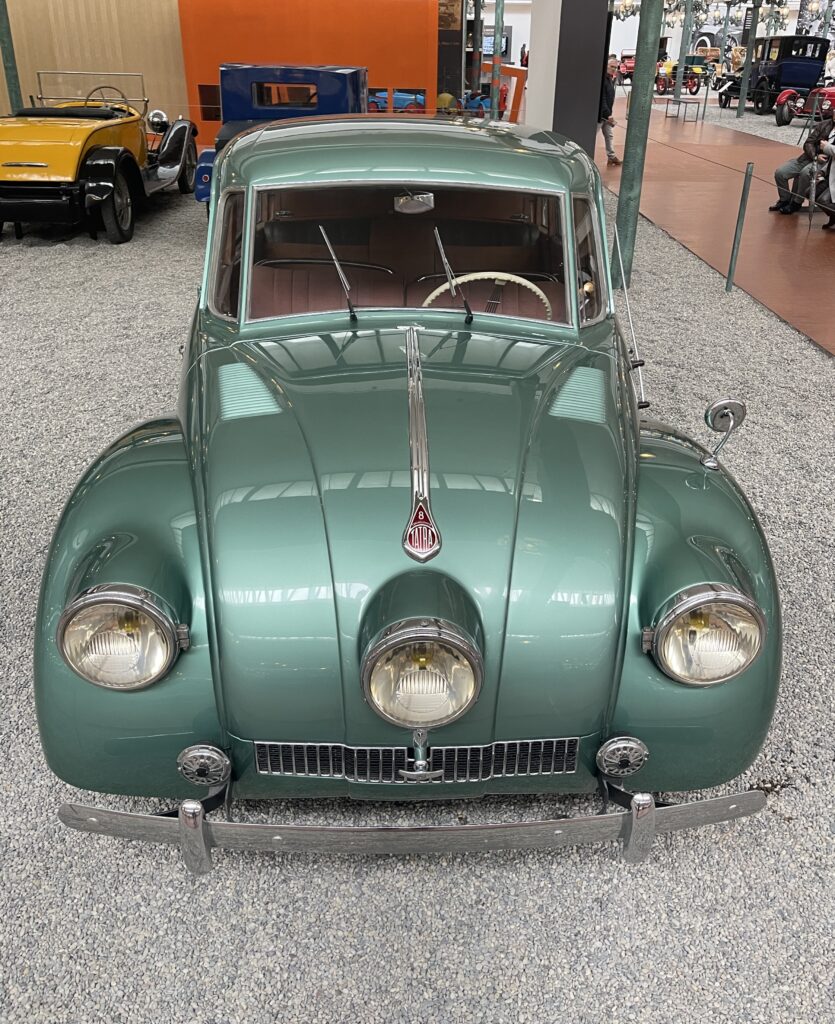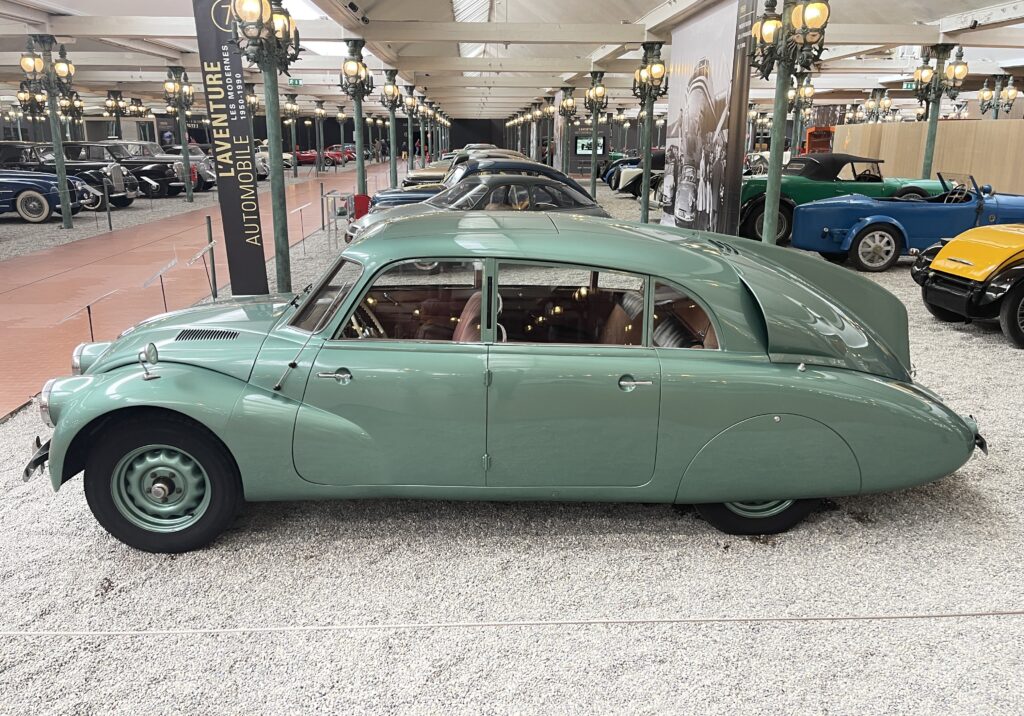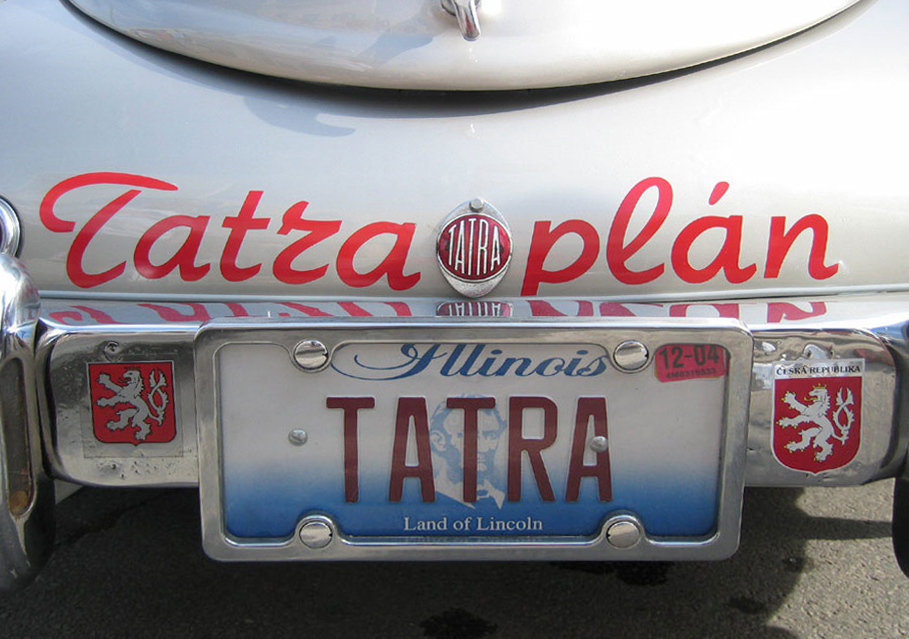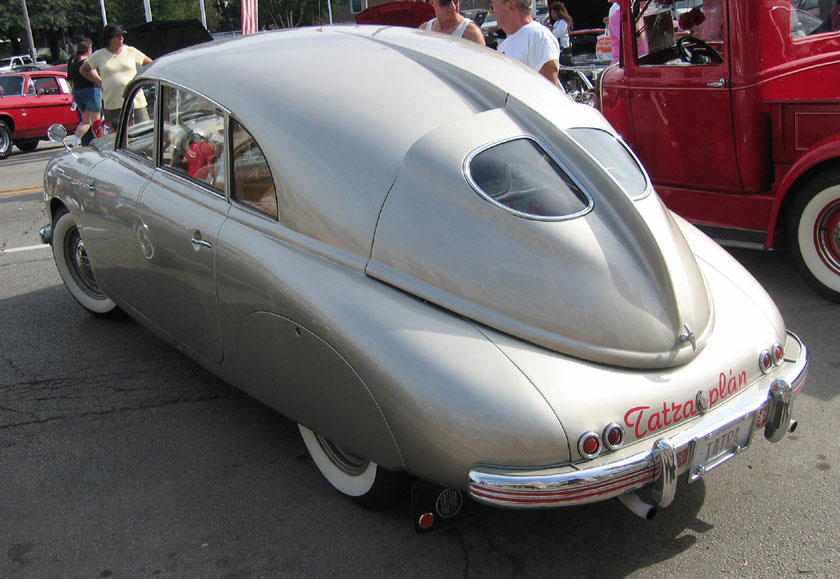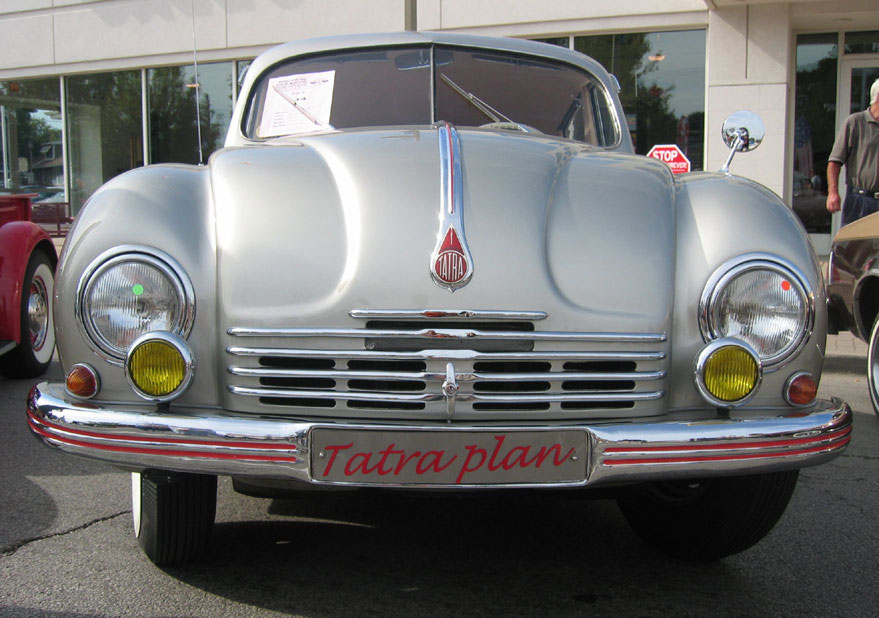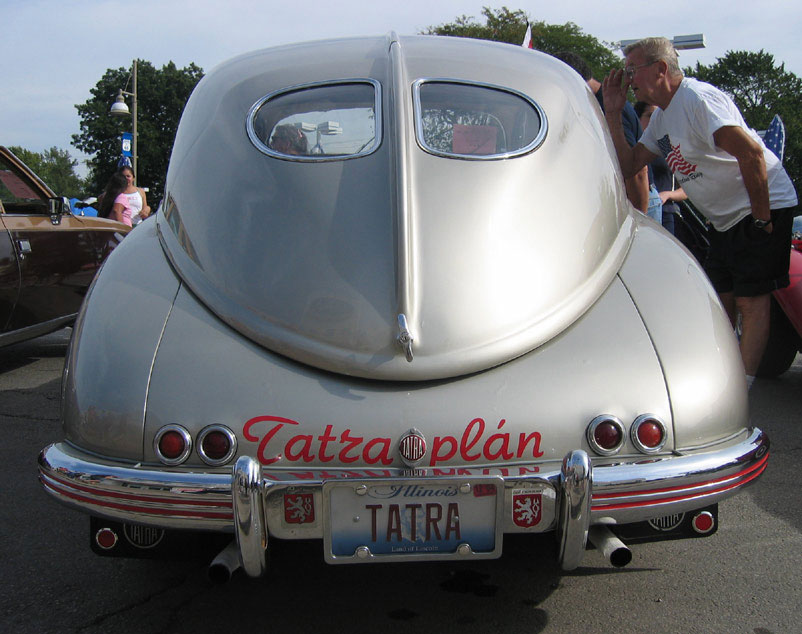Tatra is a vehicle manufacturer in Kopřivnice, Czech Republic. The company was founded in 1850 as Nesselsdorfer Wagenbau-Fabriksgesellschaft, a wagon and carriage manufacturer, and in 1897 produced the first motor car in central Europe, the Präsident.
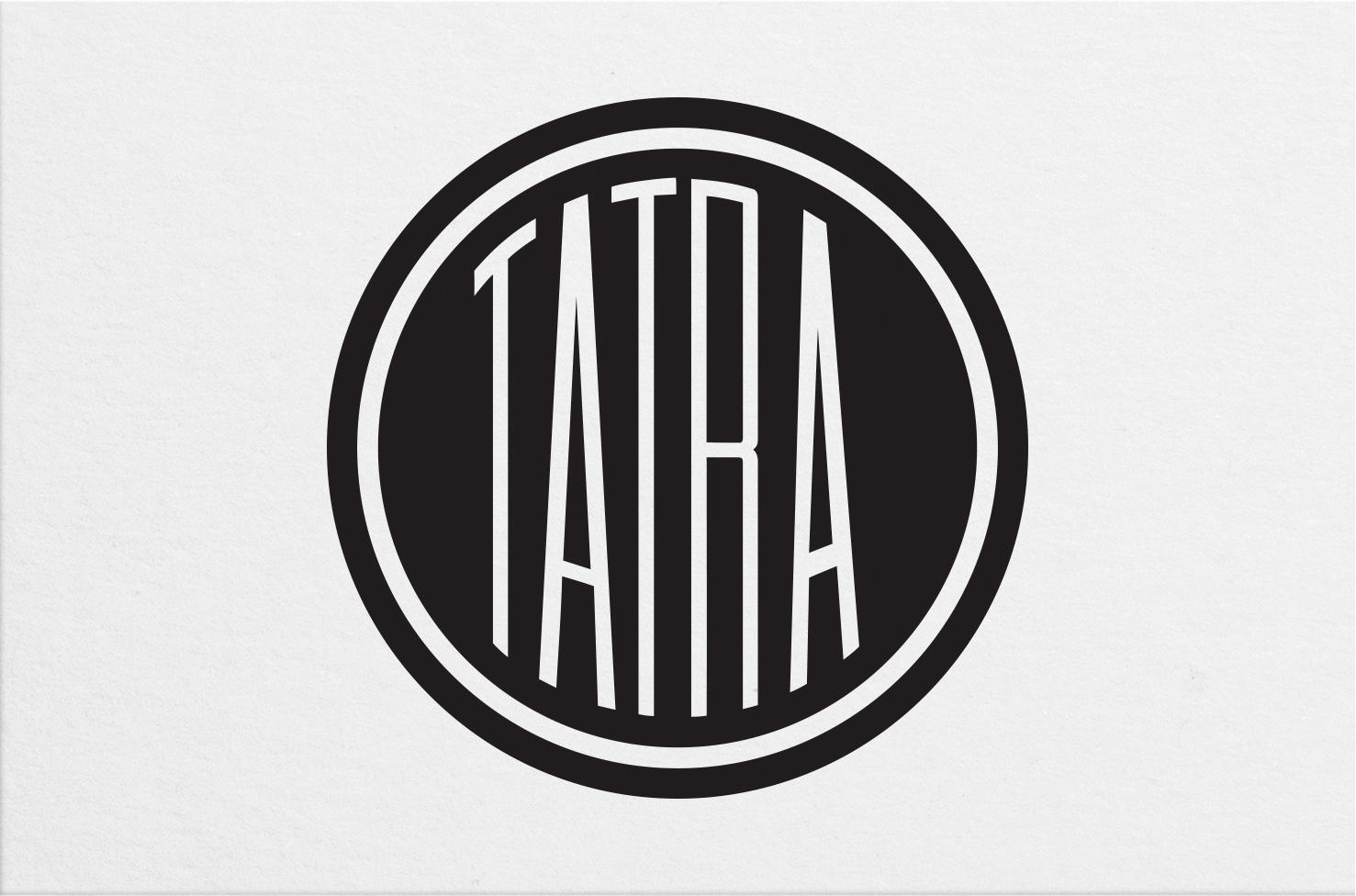
In 1919 it changed its name to Tatra after the Tatra mountains. Tatra is the third oldest car maker in the world after Daimler Mercedes-Benz and Peugeot. Production of Tatra cars ceased in 1999 but the company still produces a range of primarily all-wheel-drive 4×4, 6×6, 8×8, 10×10, and 12×12 trucks.
After the World War I Nesselsdorfer Wagenbau was renamed Kopřivnice vozovka, and in 1919 the name Tatra was given to the car range. Leopold Pasching took over control and in 1921 Hans Ledwinka returned again to develop the revolutionary Tatra 11.
The new car, launched in 1923 featured a rigid backbone tube with swinging semi-axles at the rear giving independent suspension. The engine, front mounted, was an air cooled two cylinder unit of 1056 cc. The T11 was replaced in 1926 by the similar T12 which had four wheel brakes. A further development was the 1926 T17 with a 1,930 cc water-cooled six- cylinder engine and fully independent suspension. In 1927 the company was formally renamed Tatra a.s..
Tatra’s specialty was luxury cars of a technically advanced nature, going from aircooled flat-twins to fours and sixes, culminating (briefly) with the OHC 6 litre V12 in 1931. In the 1930s, under Austrian engineer Hans Ledwinka and his son Erich, and protected by a high tariff and absence of foreign assemblers, Tatra then began building advanced, streamlined cars, which started in 1934 with the large Tatra T77, the world’s first production aerodynamic car. The fastback T77’s drag coefficient of 0.212 is rarely bettered even by the sleekest of modern cars. It featured (as did almost all subsequent big Tatras) a rear-mounted, air-cooled V8 engine, which was in technical terms very sophisticated for the time.
Ledwinka discussed his ideas with Ferdinand Porsche who used many Tatra design features in the 1938 Kdf-Wagen, later known as the VW Beetle. This is particularly evident when compared with the smaller T97 model which had a rear-mounted, air-cooled, flat-4 engine and rounded body styling. Tatra immediately started legal action, but the matter was not resolved until 1961 when Volkswagen was ordered to pay 3,000,000 Deutsche Marks in damages.
After the 1938 invasion of Czechoslovakia by Nazi Germany, Tatras continued in production, largely because Germans liked the cars. Many German officers met their deaths driving heavy, rear-engined Tatras faster around corners than they could handle. At the time, as an anecdote, Tatra became known as the Czech Secret Weapon for the scores of officers who died behind the wheel; at one point official orders were issued forbidding German officers from driving Tatras.
The factory was nationalised in 1946 when the Communist Party came to power. Although production of prewar models continued, a new model, the Tatra T600 Tatraplan was designed — the name celebrating the new Communist planned economy. It went into production in 1947. In 1951, the state planning department decided that the Tatraplan should henceforth be built at the Skoda plant in Mladá Boleslav, leaving Tatra free to concentrate on trucks, buses and railway equipment.
A mere three years later, amid much dissatisfaction among officialdom about the poor-quality official cars imported from Russia, Tatra was again given permission to produce a luxury car, the Tatra T603. A fair successor to the prewar cars, it was also driven by a rear-mounted, air-cooled V8 and had the company’s trademark aerodynamic styling. Uniquely, the Tatra T603 featured three headlights, and the first prototypes had a central rear stabilising fin, though this was lost for production. Tatra T603s were built until 1975, a twenty-year era as one of Communism’s finest cars.
In 1968 a replacement was developed; the Tatra T613. It was styled by the Italian styling house of Vignale and was a more modern, less rounded shape. It was not until 1973 that any were actually produced by the factory, and volume production did not begin until the following year.
With orders and production almost at a standstill after the fall of Communism Tatra decided to stop building the T613 in 1996.
Sales were poor, and having in its history produced a total of 90,000 cars, Tatra finally abandoned their manufacture in 1999 to concentrate on trucks.
The United States Terex Corporation acquired the majority ownership (71%) of Tatra in late 2003. As of late 2006, however, majority ownership (80.51%) lies in the hands of Tatra Holdings s.r.o., an international consortium comprising Vectra Limited of U.K., Sam Eyde of the U.S., KBC Private Equity of Belgium, Meadowhill s.r.o. of Czech Republic and Ronald Adams of the U.S.
(This article is licensed under the GNU Free Documentation License. It includes content from the Wikipedia)
